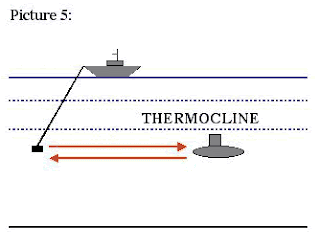COMMENTS
Few countries have truly efficient defence industries. Efficient countries usually need:
1. A large domestic arms market (eg. the US, Russia and China) and
2. a stable arms export market which owes much to the international political power of the
exporter (especially the Soviets/Russia and the US, how otherwise could the US have
continually forced the F-35 on Canada?) or
3. Mainly a highly efficient and stable arms export market (eg. South Korea, Spain, to an
extent Sweden) or
4. Specialised needs to meet constant national threats (eg. India and Israel in conventional
weapons and even more in their nuclear weapons.) but
5. For other countries there are ongoing debates about clearly inefficient defence industries
(amounting to massive central government subsidies) versus arguments of defence self-
reliance and "nation-building". Australia has not attempted to build the latest 4th or 5th
generation jetfighters, so why build the latest large warships?
Australia lacks points 1 to 4 but 5 fits it well, as the following article illustrates.
ARTICLE
"Productivity Commission: Building submarines in SA is 'a return to bad old days of protectionism'
…the Productivity Commission has now said without a better product to justify the extra cost of building submarines at home, "productive resources (labour, capital and land) are diverted away from more efficient uses".
In other words, the billions of extra dollars spent on building submarines in Australia instead of buying them from Germany, Japan, or France could be better spent on developing the industries of the future.
…South Australia, with its heavy reliance on old-world industries, has long been a problem child for politicians of all persuasions.
With the Government having bitten the bullet and allowed the heavily subsidised car industry to walk, the $50 million bailout of Arrium to keep its Whyalla steelworks open shows the political reality of keeping voters happy will trump painful structural change.
In its latest report on Trade and Industry Assistance, the Productivity Commission said the 30 per cent cost premium to build submarines in South Australia is "a major step back from the historical reduction in using Government procurement preference as industry policy".
[30% is a vast underestimate – more like the build-in-Australia price will be 100% higher than the build in France price!]
"It's hardly surprising that the state with the most protectionism — South Australia — also has towards the highest unemployment rate, some of the lowest growth and is a significant net recipient of Government subsidy," said Simon Cowan, research manager at the Centre for Independent Studies.
"It's literally just a small niche industry being protected to the tune of billions of dollars a year. It just doesn't make sense from any perspective other than how do we try to shore up votes in Adelaide."
According to its research, the Productivity Commission said the effective assistance being given to the companies who will build Australia's next generation submarines is "higher than the peak historical levels recorded for the automotive and textiles clothing and footwear industries prior to the significant economic reforms of protection".
…However the Australian Industry Group, which represents the manufacturing sector, said the submarine deal is not protectionism but nation building…” See WHOLE ABC Article.
RELEVANT PRODUCTIVITY COMMISSION DOCUMENTS
COMMENTS CONTINUED
New submarine selling countries find it is difficult to break into the submarine export market. Submarines are high cost, specialised products that frequently need to be tailor-made for each customer country.
A country usually needs an already proven reputation that it can maintain subs as they age in terms of ongoing advice/expertise for overhaul and ongoing spare parts availability. I understand that there were problems in the ongoings for the Collins.
As with the Collins (Australia entertaining the notion of selling 2 to New Zealand?) certain submarine building Australian Defence Ministers will imply Australia can build and export Shortfin submarines or at least be a regional hub for DCNS Scorpene parts.
- This is unrealistic because of licensing and intellectual property restrictions and realities.
- Also Australia would be competing in Shortfin selling against the Shortfin experts DCNS of
France.
- France would remain the main place where the original submarine parts and spare parts are
manufactured
- Also Australia would be competing against the world’s most successful submarine seller -
Germany's TKMS and against the TKMS designs that South Korea builds.
- Russia is also a low cost builder of repute, and
- China is becoming a serious low cost competitor.
Pete





























